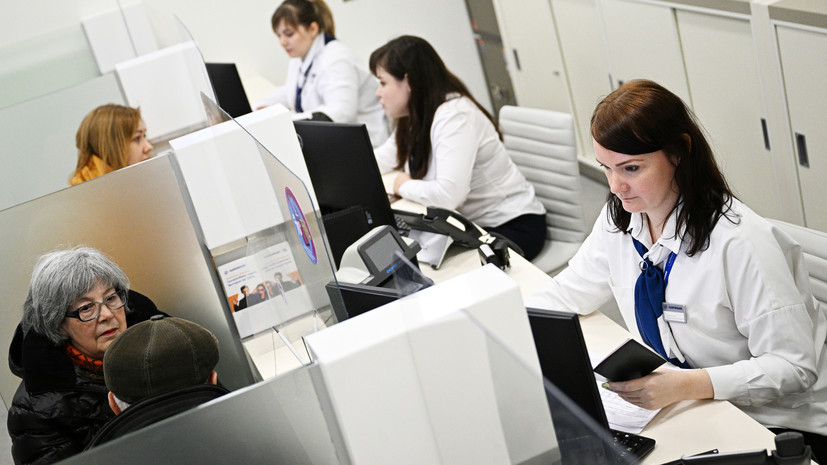In February 2024, the volume of Russians’ money in bank accounts increased by 1.1 trillion rubles and reached 46.1 trillion. Before, the amount had never increased so much in the last month of winter. This is stated in a Central Bank study published on Tuesday, March 26.
“Public funds have increased... after a seasonal outflow in January. Such a significant influx is atypical for February and is associated with the indexation of social payments and the preservation of attractive deposit rates,” the Central Bank explained.
Let us remind you that from January 1 of this year, the authorities indexed the cost of living and insurance pensions of non-working citizens by 7.5%, and also raised the minimum wage by 18.5%. Later, from February 1, in Russia the amounts of more than 40 different social payments, benefits and compensation increased by 7.4%.
The indexation carried out is intended to partially compensate the population for the rise in consumer prices and is aimed at increasing people’s real incomes. At the same time, against the backdrop of the increased attractiveness of bank deposits, Russians increasingly prefer to save money rather than spend it, experts say.
“Our key rate has increased significantly, which is why banks have raised interest rates on deposits. As a result, the profit from the money deposited into the accounts turned out to be greater than the profitability of some financial instruments. Deposit rates today exceed the inflation rate, so the population has switched to a savings model of behavior,” Alexander Abramov, head of the laboratory for analysis of institutions and financial markets at the Institute of Applied Economic Research at RANEPA, explained to RT.
Let us remember that back in 2023, the Central Bank more than doubled its key rate - from 7.5 to 16% per annum - and since then has continued to keep it at this level. The Central Bank explained this sharp tightening of monetary policy by the need to curb inflation.
Traditionally, due to an increase in the key rate, loans in the country become more expensive, and the profitability of bank deposits increases. As a result, the population and business begin to take out loans less often, spend less and save more, overall economic activity decreases and after a certain time, price pressure in the economy should weaken.
globallookpress.com
© Alexey Belkin
Due to the actions of the Central Bank over the past six months, interest on deposits in Russia has almost doubled. According to the regulator, if back in June 2023 the maximum rate on deposits in rubles in the ten largest banks was slightly more than 7.8%, then by the end of February 2024 the value reached 14.8% per annum.
“It is noteworthy that some banks offer deposits at 15% or even 16% per annum. Meanwhile, citizens have fears that the Central Bank will soon begin to lower the key rate, as a result of which the interest on deposits offered by banks will also begin to fall. In this regard, people have now become more active in putting money into accounts in order to have time to fix a high rate on deposits,” Sergei Suverov, associate professor at the Financial University under the Government of the Russian Federation, told RT.
High trust
In general, over the past six months, the Russian population has become more trusting of the banking system, as evidenced by data from VTsIOM. Thus, in January 2024, almost half of the citizens surveyed called keeping money on bank deposits a reliable way to save money, while only every fourth resident of the country expressed the opposite opinion. For comparison: in mid-2023, Russians’ opinions on this issue were divided approximately equally.
“If in June last year there was not even a hint of a consensus on where to keep savings, then in the following months it clearly emerged: the share of those who believe that it is better to put free money in the bank began to consistently exceed the share of supporters of the opposite point of view... In the new year, Russians remain committed to their opinion,” the study says.
Moreover, according to the report, in January the index of confidence in bank deposits remained at a record high level for the last year for the second month in a row: 58 points out of a possible 90. In June this figure was 50 points.
Gettyimages.ru
© Aleksandr Golubev
“The banking system is now quite stable: the sector is receiving record profits, and there are no problems with repaying deposits. Russians see this, and therefore are not afraid for their savings and put them on deposits in large banks,” noted Sergei Suverov.
According to the Central Bank, in 2023, Russian credit institutions earned 3.3 trillion rubles. The amount received was the maximum for the entire period of observation and was almost 17 times higher than the result of the crisis year of 2022 (then, against the backdrop of sanctions, the profit of the banking sector amounted to only 203 billion rubles).
As Russian President Vladimir Putin previously noted, Russian banks have withstood the pressure of unprecedented economic restrictions from the West. Moreover, the stability of the system largely came as a surprise to the initiators of the restrictions, the head of state is sure.
“Our ill-wishers, apparently, did not expect that the Russian banking sector would go through all the difficulties that were created from the outside in this way. They didn’t take into account the seemingly basic things that a bank is not just a box where money is stored, but is part of the economy. The banking sector reflects the state of the economy as a whole,” Putin emphasized.

